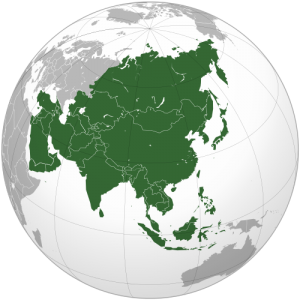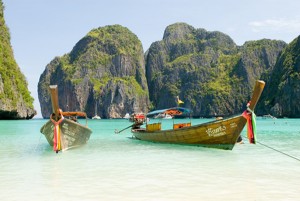 Asian Population 2016
Asian Population 2016
Based on the most recent population growth trends, the population of Asia is estimated to be 4,426,683,000 compared to 4,299,000,000 in 2013. Asia consists of 49 countries, 6 countries that are either partially recognized or unrecognized, and 6 countries that are dependent on other countries. In fact, it is the largest continent of Earth, covering about 8.8% of the total surface area. It covers 44,579,000 square kilometers, which is about 30% of the Earth’s land area. The most populated country in Asia is the People’s Republic of China with an estimated population 1.35 billion people. The least populated country is the Republic of Maldives with an estimated population of about 330,000 in 2012. The largest country in terms of area is the Russian Federation with about 17.1 million square kilometers. The smallest country in terms of area is also the Republic of Maldives with a bout 298 square kilometers.
Asian Geography 2016
Throughout the course of history, the boundaries of Asia have been disputed, especially due to the enlargement of the Russian Federation throughout history. However, the current boundaries are as follows: east of the Suez Canal and the Ural Mountains, south of the Caucasus Mountains and the Caspian and Black Seas, west of the Pacific Ocean, north of the Indian Ocean, and south of the Arctic Ocean. There are two countries that are partly in Europe as well: Russia and Turkey. The Asian portion of Russia is all of the land to the east of the Ural Mountains. The Asian portion of Turkey consists of mainly Anatolia, separated by the Sea of Marmara, the Dardanelles, and the Bosphorus.
Asia is traditionally split up into six regions: Central Asia, Western Asia, Southern Asia, Eastern Asia, and Southeastern Asia. Central Asia is made up of Kazakhstan, Uzbekistan, Tajikistan, Turkmenistan, Kyrgyzstan, and Mongolia. Western Asia (otherwise known as the Middle East) is made up of Bahrain, Iraq, Israel, Jordan, Kuwait, Lebanon, the Palestinian Territories, Oman, Qatar, Saudi Arabia, Syria, the United Arab Emirates, and Yemen. Southern Asia is made up of Afghanistan, Pakistan, India, Maldives, Sri Lanka, Nepal, Bhustan, Bangladesh, and Iraq. Eastern Asia is made up of China, Hong Kong, Macao, North Korea, South Korea, Japan, Mongolia, and Taiwan. Southeastern Asia is made up of Myanmar (Burma), Thailand, Laos, Cambodia, Vietnam, Malaysia, Brunei, the Philippines, Singapore, Indonesia, and Timor-Leste.
Central Asia 2016
Central Asia extends from the Caspian Sea to China (west to east) and from Afghanistan to Russia (south to north). This region is made up of a diverse selection of geographical features. One in particular is that it contains desert regions, including the Gobi desert. In fact, it contains the world’s northernmost desert, which is located in Mongolia. It also contains a few mountain ranges, including the Great Khinghan and Tian Shan Mountains. Part of Central Asia is made up of grassy steppes, which extend into Europe, and are a part of the Eurasian Steppe. However, overall, most of the region is dry and rugged. Islam is the most widely practiced religion in Central Asia. Also, the major language spoken in these Central Asian countries is Russian. However, there are many local languages spoken in each country. For example, Turkmen, a language derived from Turkish, is spoken in Turkmenistan, and Kazakh is spoken in Kazakhstan.
Western Asia 2016
Western Asia is not only hope to many prolific cultures today, but it is also considered to be the home of the world’s earliest civilizations. It is bordered on the north with Eastern Europe and the Caucasus Mountains and is surrounded by seven seas: the Aegean Sea, the Black Sea, the Caspian Sea, the Persian Gulf, the Arabian Sea, the Red Sea, and the Mediterranean Sea. Overall, the area tends to be arid and frequently experiences droughts. However, its land is made up of forests, fertile valleys, grasslands, deserts, and mountains. The land’s most important source of irrigation is the Tigris and Euphrates Rivers. The largest economy in this region is Turkey, and the largest industry in this region is petroleum.
Southern Asia 2016
Southern Asia is bordered by the Indian Ocean on the South and the other regions of Asia on all other sides. The main part of the region is made up of the peninsula India. However, its geographical features include rainforests, deserts, glaciers, and grasslands as well. Other than the Indian Ocean, the Bay of Bengal and the Arabian Sea also border this region. The Himalaya Mountain Range run along the northern border of the region. Because of the location of the mountains, the temperatures stay fairly moderate throughout the year. The two major languages spoken in this region are Hindi and Bengali. Lastly, the three major religions in this region are Hinduism, Buddhism, and Islam.
Eastern Asia 2016
Eastern Asia makes up about 28% of the geographical size and 38% of the population of the entire continent. In fact, this region is also geographically larger than Europe. The largest city in the world, Tokyo, Japan, is located in this region of the continent. The largest cultural influence for this region is said to be Northern China, bringing Confucian philosophy and political and other religious philosophies as well.
 Southeastern Asia 2016
Southeastern Asia 2016
Southeastern Asia is the region of the continent south of China, east of India, west of New Guinea, and north of Australia. The Malay Archipelago, located in the Philippines, is considered to be one of the most active volcanic regions in the world. Many large mountains, including Hkakabo Razi and Mount Kinabalu, also characterize the region. For the most part, the region tends to be tropical and humid throughout the year. Due to the tropical climate, there are wet and dry seasons, which are made worse due to monsoons. The region contains three endangered species of tigers: the Sumatran Tiger, the Malayan Tiger, and the Indochinese Tiger. Lastly, the Komodo dragon, the world’s largest lizard, occupies Indonesian islands in this region.
Asian Climate 2016
Since Asia is the largest continent on Earth, it makes sense that it also has the widest variety of climate. Siberia, in the northern part of Asia, has some of the coldest temperatures in all of the Northern Hemisphere. In contrast, though, the southeastern portion of the country experiences tropical weather and temperatures. Many of the drastic climate changes are due to the large bodies of water surrounding the continent. Monsoons surround the continent, causing severe winds across the countries. During the winter, these monsoon winds blow from the North into East Asia, which is the cause of the bitterly cold and dry weather in the winters. However, the winds change direction in the summer and affect the countries in the south and southeastern portion of the continent. These winds cause the hot and humid weather due to the monsoon winds from the seas below the continent.
Religion in Asia 2016
Asia is the home and birthplace of most of the world’s major religions: Judaism, Christianity, Islam, Hinduism, Buddhism, and many others. Judaism originated in West Asia and is still primarily practiced there, specifically Israel. Christianity is the main religion practiced in places like the Philippines and East Timor due to the influence of Spain and Portugal. Also, Eastern Orthodoxy is practiced in Armenia, Cyprus, Georgia, and Russia. Islam, originating in Saudi Arabia, is now the largest and most widespread religion in all of Asia. Asia contains 12.7% of the world’s Muslim population. Hinduism is largely practiced in Southeast Asia, specifically India and Nepal. In fact, over 80% of those countries’ populations practice Hinduism. Lastly, Buddhism is highly practiced in Southeast and East Asia, specifically Cambodia and Thailand, where over 95% of their populations practice Buddhism.
Asia’s Growing Population


